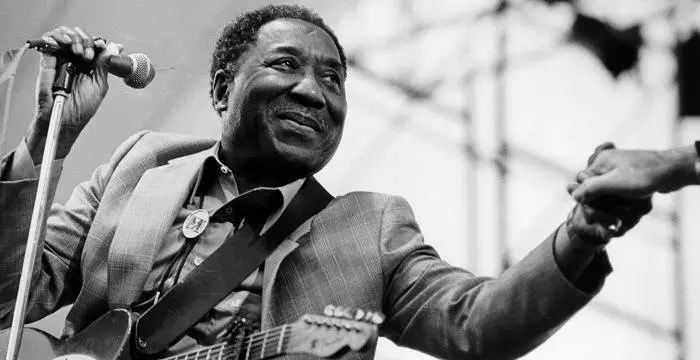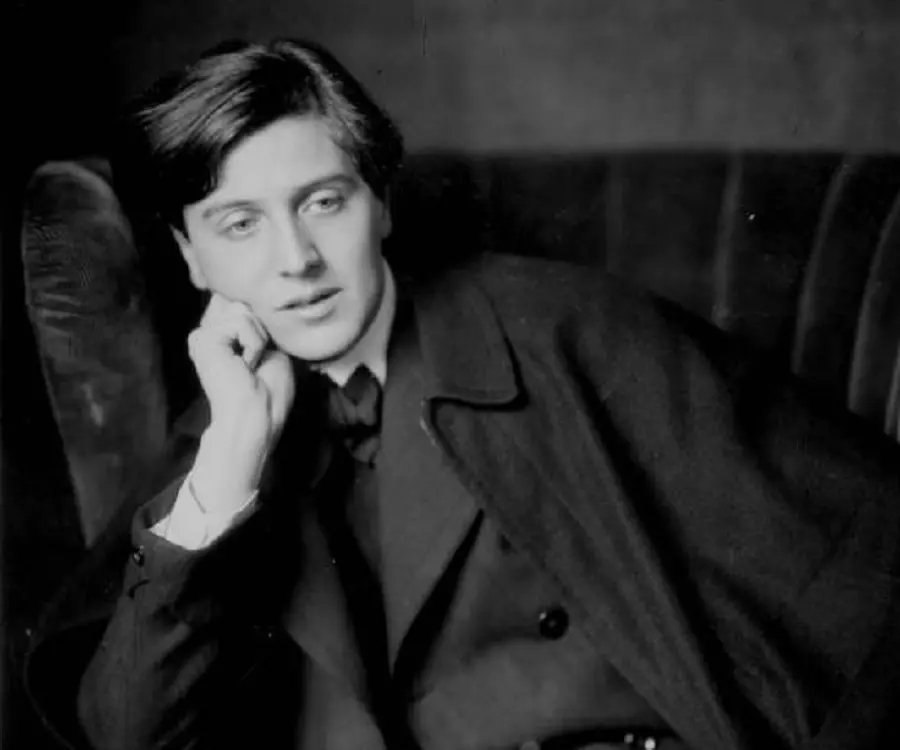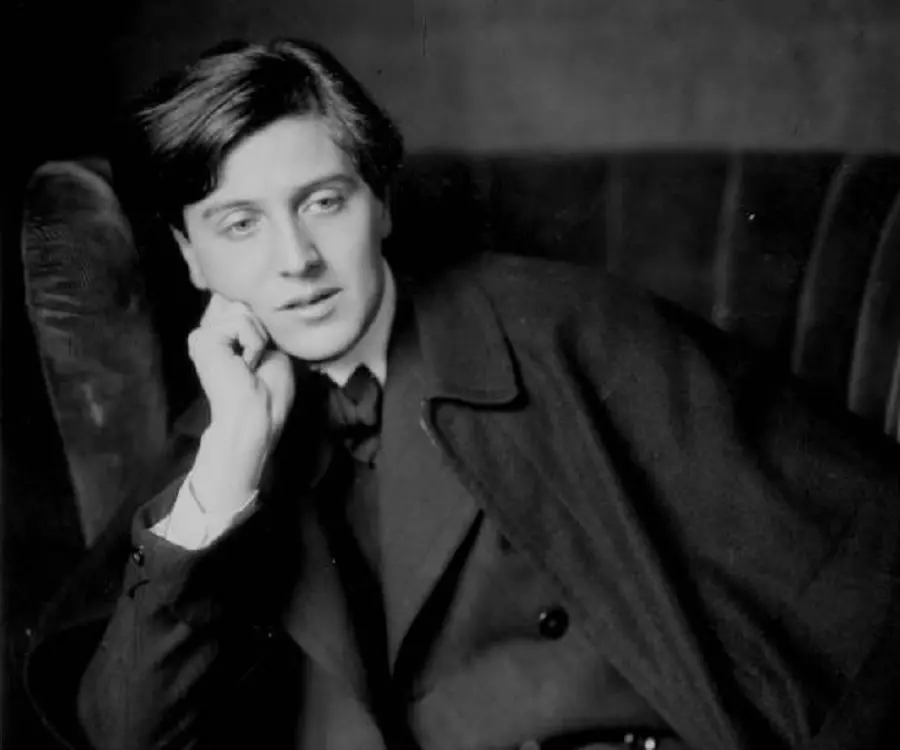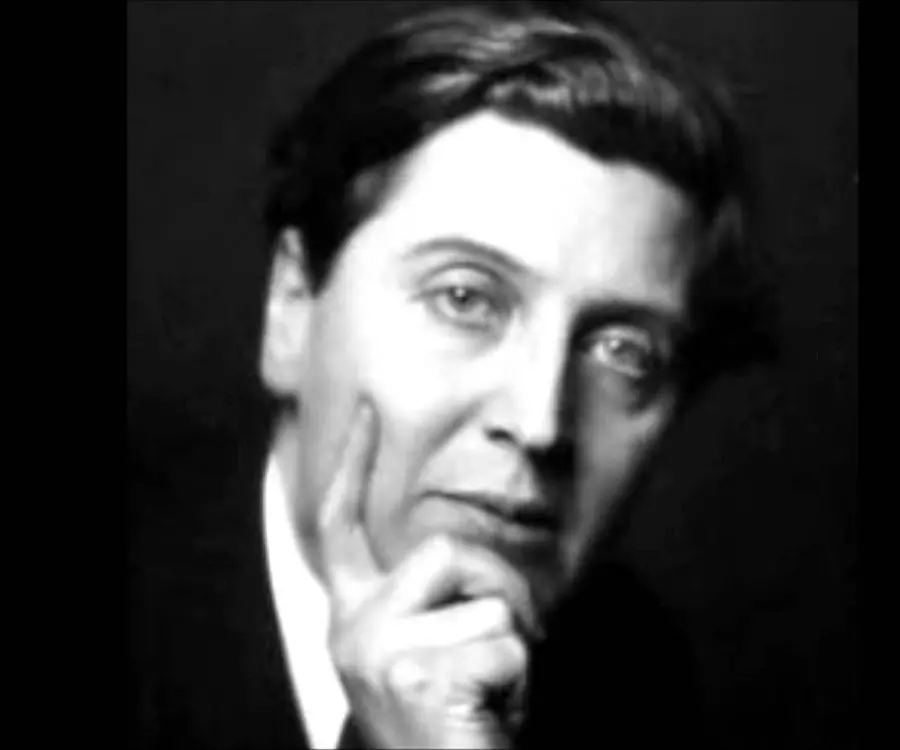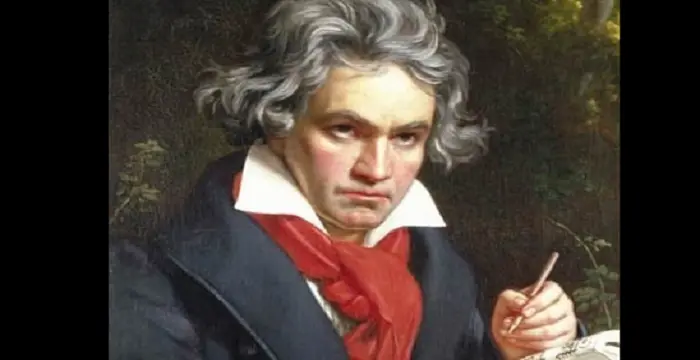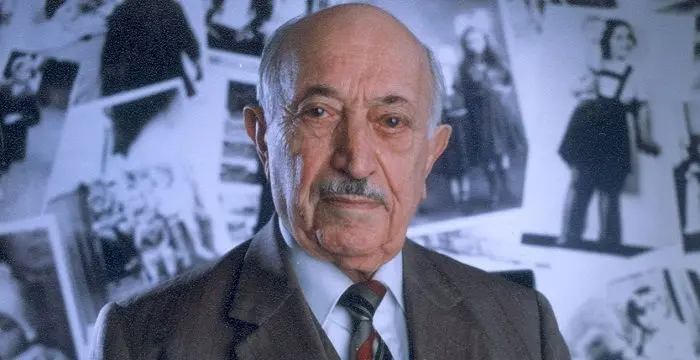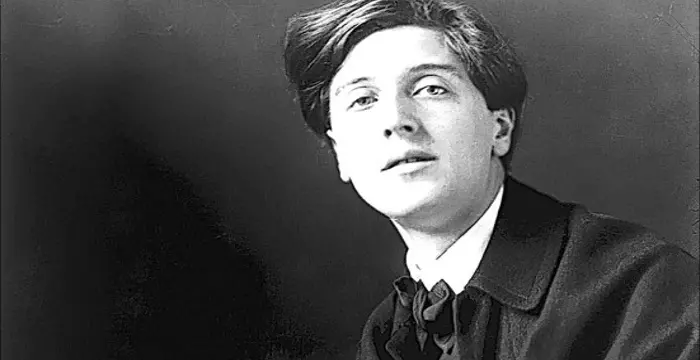
Alban Berg - Composers, Family and Family
Alban Berg's Personal Details
Alban Berg was a renowned Austrian composer
| Information | Detail |
|---|---|
| Birthday | February 9, 1885 |
| Died on | December 24, 1935 |
| Nationality | Austrian |
| Famous | Musicians, Composers |
| Childrens | Albine Wittula |
| Birth Place | Vienna |
| Gender | Male |
| Father | Johanna |
| Mother | Conrad Berg |
| Sun Sign | Aquarius |
| Born in | Vienna |
| Famous as | Composer |
| Died at Age | 50 |
// Famous Musicians
Ted Nugent
Ted Nugent is a hard rock musician known for his hits ‘Stranglehold’ and ‘Cat Scratch Fever’. This biography of Ted Nugent provides detailed information about his childhood, life, achievements, works & timeline.
Muddy Waters
Muddy Waters was a blues musician referred to as the 'father of modern Chicago blues.' Check out this biography to know about his childhood, family life, achievements and fun facts about him.
Travis Bacon
Travis Bacon is an American musician and actor, better known as the son of veteran actors Kevin Bacon and Kyra Sedgwick. Find more about his family, birthday, etc.
Alban Berg's photo
Who is Alban Berg?
Alban Maria Johannes Berg was an Austrian composer born in the late nineteenth century into a well-to-do family in Vienna. Nurtured in a culturally rich ambience, he learned to appreciate music, literature and art from early childhood. Although his initial aim was to become a poet, he developed an intense interest in music by the age of fourteen and by fifteen, he had composed his first song. Unfortunately, in the pursuit of music, he neglected his studies and failed in the matriculation examination. This, together with the loss of his father and his involvement with a housemaid pushed him into mental turmoil and to overcome that he immersed himself in music. Soon, he was fortunate enough to receive guidance from Arnold Schoenberg. The latter not only taught him everything he needed to known about music, but also guided him in other matters. The bond so created between them lasted throughout their lives. Berg, Schoenberg and Anton Webern later formed the Second Viennese School. Berg’s specialty lay in the combination of Romantic lyricism with twelve-tone technique, to which he gave a human-touch. As a result, his compositions are said to be more emotional than his master’s.
// Famous Composers
Ludwig van Beethoven
Ludwig Van Beethoven was one of the greatest composers the world has ever had. Check out this biography to know about his childhood, family life, and achievements.
Emina Jahović
Emina Jahović Sandal is a Serbian model, actress and singer-songwriter. Know more about her childhood, life, career, achievements and timeline in this biography.
John Denver
John Denver, a famous American singer-songwriter and activist, is remembered for songs like Take Me Home, Country Roads and Annie's Song. To know more about his childhood, career, profile and timeline read on
Childhood & Early Life
Alban Maria Johannes Berg was born on February 9, 1885 in Vienna into a well-to-do family with upper middle class background. His father, Conrad Berg, owned a successful import-export business on books and arts as well as several properties in Vienna and an estate in Carinthia.
Alban’s mother, Johanna Maria Anna (nee Braun) Berg, also came from a well-to-do family. She was a gifted painter and singer. In addition, she had a knack for languages and had studied both English and French.
The couple had four children, out of which Alban was born third; he had two elder brothers, Hermann and Charly, and a younger sister, Smaragda. Just as with most families in Vienna, music was part of their daily life.
Although it is believed that the children inherited their musical talents from their maternal grandfather, Franz Xaver Melchior Braun, their parents were also equally enthusiastic about it. When the first Burgtheatre was broken down, Conrad had its pipe organ installed at the family home.
In addition, he also had many musical friends, and Austrian composer Anton Bruckner often came to their house to play the pipe organ. The children also produced plays for the guests.
Other than that, the children often visited art galleries and concerts with their governess Ernestine Gotzlich. She also taught them piano and French. The locality the lived in was also imbibed with art and culture. Thus from an early age, an appreciation for music, art and culture was instilled in the Berg children.
In 1895, as Alban turned ten, he was admitted to Communal-Oberrealschul. Here he studied German, French, English religion, history, mathematics, natural sciences, drawing and gymnastic. Although he was very interested in literature, to his immense regret, the school did not put any emphasis on that.
When Alban reached the fifth year, he began to find German language as well as Geometry exceedingly difficult, mainly because he could not master the rules. Instead, he began to find solace in literature. Henrik Ibsen was his favorite author.
Soon he also began to take interest in music and encouraged by his father and brother, he began to compose music. Unfortunately, the sudden death of his father in 1900, made the situation topsy-turvy. He not only lost the financial stability, but also the emotional support that he had so far enjoyed.
After Father's Death
Sometime in 1899, a year before he died, Conrad Berg had confided in Hermann Watznauer, a neighbor, about his declining health and had asked him to take care of Alban, a request Wartznauer had readily accepted. Therefore, when Conrad died, Wartznauer started mentoring Alban.
He not only introduced young Alban to the avant-garde culture of their city, but also presented him with a copy of ‘Golden Book of Music.’ Alban studied the book thoroughly and began to immerse himself in music, neglecting his studies. He therefore failed in his matriculation examination.
At around this time, he became involved in an affair with Marie Scheuchl, a servant girl in the Berg household and fathered a daughter, Albine, born in December 1902. All these incidents affected young Alban so much that in the fall of 1903, he attempted suicide.
However, he soon overcame his mental agony and continued composing music. By 1904, he had more than thirty pieces composed for voice as well as piano. Also in the same year, he graduated from school and took up a job of an accountant (unpaid) in a government office.
With Arnold Schoenberg
In October 1904, Alban’s sister Smaragda noticed an advertisement, which said that Arnold Schoenberg would be holding classes on music theory, harmony and counterpoint from 15 October 1904 to 15 May 1905. On realizing that his brother could benefit from the association, Charly took some of Alban’s works to Schoenberg.
Impressed, Schoenberg agreed to take him as a private student free of cost. Berg studied with him until 1911, first as a part-time student and then from 1906, as full time. From November 1905, Alban started paying his fees as his mother had inherited some family property.
Under Schoenberg’s guidance, Alban Berg mastered the art of composing and from 1907, he started composing lessons for the students. They included five drafts for piano sonatas, which in 1908/1909, culminated into his ‘Piano Sonata, Op 1’.
‘Sieben frühe Lieder’ (Seven Early Songs, written between 1905 and 1908) was another of his important works of this period. Although the work highlights the pre-Schoenberg song writing technique there is also an undeniable influence of Schoenberg in them.
After Schoenberg
Soon enough, Alban Berg became a part of the cultural elite of Vienna. In 1912, he wrote ‘Fünf Orchesterlieder, nach Ansichtkarten-Texten von Peter Altenberg’ (Five Songs on Picture Postcard Texts by Peter Altenberg) and on March 31, 1913, two of these orchestral songs premièred in Vienna.
Conducted by Schoenberg at Skandalkonzert, the concert shocked the audience with its experimentalism as well as its expressionism and they resorted to rioting. It was one of his first orchestral compositions in literature and also his most innovative pieces. Therefore, the rejection caused a huge blow to his self-esteem.
In 1914, he started writing an opera, basing his work on Georg Büchner’s drama, ‘Woyzeck.’ But as the First World War started in the same year, he had to defer the work.
In 1915, Berg joined the Austro-Hungarian Army to fight in the First World War. Although he was quite enthusiastic about his military service, recurring attacks of asthma forced him to take leave in 1917. During this period, he completed the writing the libretto of ‘Wozzeck’ based on the drama ‘Woyzeck.’
After the end of the WWI, Alban Berg settled in Vienna, where he started giving private tuition in music. Side by side, he helped Schoenberg to run his Society for Private Musical Performances. Their aim was to create the ideal environment for the exploration of unfamiliar forms of music.
Around this time he restarted his work on ‘Wozzeck’, composing its scores. He completed the work in 1921 and dedicated the work to Alma Mahler, the widow of Gustav Mahler.
Achieving Success
‘Wozzeck’ was premiered on 14 December 1925 at the Berlin State Opera. It quickly gained entry into the mainstream operatic tradition and became established in the repertoire of the major European opera houses. The royalty it earned enabled Berg and his family to lead a comfortable life.
Other than that, ‘Kammerkonzert’ (Chamber Concerto) for violin, piano, and thirteen wind instruments, which he wrote between 1923 and 1925, was another of his popular pieces. It was finally premiered on 19 March 1927.
Meanwhile, soon after completing the Chamber Concerto, Berg began to search for new opera topics. While doing so, he wrote ‘Lyric Suite’, a six-movement work for string quartet, published in 1926.
His search for innovative opera topics resulted in ‘Lulu.’ It was adapted from Frank Wedekind's plays, ‘Erdgeist’ and ‘Die Büchse der Pandora.’ He started working on it in 1929 and kept on working on it until his death six years later. Ultimately, he died before completing the final act.
Meanwhile in 1929, he wrote ‘Der Wein.’ In addition, he also established himself as a successful teacher. But it all changed with the rise of Nazi Party in Germany in 1933.
Last Years
The Nazis, infamous for their anti-Semitic views, not only denounced everything related to Jews, but also everything modern. Alban Berg’s main “crime” was that he had studied under Schoenberg, a Jew. Very soon, the authorities proscribed his works and placed his music on the list of degenerate music.
In Germany, all his programs were cancelled. In Vienna too, they evoked meager response. However, outside Germany, he was still considered a true representative of Austrian music and his works continued to be performed in leading music festivals.
In 1932, he acquired an isolated lodge, the Waldhaus, on the southern shore of the Wörthersee, near Schiefling am See in Carinthia. He now moved to this lodge to work in seclusion, mainly on ‘Lulu.’
Then in 1935, Louis Krasner, a Russian-American violinist, commissioned him to compose ‘Violin Concerto’ for him. Initially Berg procrastinated a bit, but the death of 18-year-old Manon Gropius, the daughter of Alma Mahler and Walter Gropius spurred him to complete it in six weeks, as sort of requiem for her. Little did he realize that it would be his last composition.
Major Works
Alban Berg is best remembered for his first opera, ‘Wozzeck.’ The work, based on Georg Büchner’s incomplete drama, ‘Woyzeck’, depicts the regular life of soldiers as well as the townspeople of a German-speaking town. His experience as a soldier also left an impression on this work.
Büchner had left a number of unordered scenes, out of which Berg selected fifteen and formed a three act opera with five scenes each. Although he wrote the libretto, he took care to retain the essential character of the play. Militarism, callousness and social exploitation are the main themes of this opera.
Among his instrumental compositions, the ‘Violin Concerto’, score dated 11 August 1935, is probably the best-known piece. It is also one of his most frequently performed creations.
Personal Life & Legacy
In 1906, Alban Berg met Helene Nahowski, scion of a wealthy family and a singer. Although her family disapproved of the match, the two got married on May 3, 1911 and remained together until his death in 1935. They did not have any children.
Berg’s only daughter, Albine, was born out of wedlock from a liaison with Marie Scheuchl, a servant girl in the Berg household. He was then still in his teens at the time of his daughter’s birth.
Berg and his wife spent the last few years of their lives at their cottage on the shore of the Wörthersee. He returned to Vienna in the middle of November 1935 and developed a carbuncle on his back. It was induced by an insect sting and later led to blood poisoning.
In December 1935, he was hospitalized with a septicemia. Although initially he showed improvement, the condition became worse all of a sudden and he died from it on Christmas Eve. He was then only fifty years old.
Today, Alban Berg is remembered as one of the most important composers of his century. He, along with Schoenberg and Anton Webern, formed what later became known as the 20th-century Viennese School or Second Viennese School.
The asteroid 4528 Berg has been named in Alban Berg’s honor.
// Famous Austrian peoples
Martin Buber
One of the greatest philosophers to have ever walked on earth, Martin Buber contributions to philosophy is a long-standing one. Explore all about his profile, childhood, life and timeline here.
Boris Kodjoe
Boris Kodjoe is a German-Ghanaian actor from Austria. Check out this biography to know about his childhood, family life, achievements and fun facts about him.
Simon Wiesenthal
Simon Wiesenthal was an Austrian writer and a famous Nazi hunter. This biography gives detailed information about his childhood, life, works, and timeline.
Alban Berg biography timelines
- // 9th Feb 1885Alban Maria Johannes Berg was born on February 9, 1885 in Vienna into a well-to-do family with upper middle class background. His father, Conrad Berg, owned a successful import-export business on books and arts as well as several properties in Vienna and an estate in Carinthia.
- // 1895In 1895, as Alban turned ten, he was admitted to Communal-Oberrealschul. Here he studied German, French, English religion, history, mathematics, natural sciences, drawing and gymnastic. Although he was very interested in literature, to his immense regret, the school did not put any emphasis on that.
- // 1899Sometime in 1899, a year before he died, Conrad Berg had confided in Hermann Watznauer, a neighbor, about his declining health and had asked him to take care of Alban, a request Wartznauer had readily accepted. Therefore, when Conrad died, Wartznauer started mentoring Alban.
- // 1900Soon he also began to take interest in music and encouraged by his father and brother, he began to compose music. Unfortunately, the sudden death of his father in 1900, made the situation topsy-turvy. He not only lost the financial stability, but also the emotional support that he had so far enjoyed.
- // 1902 To 1903At around this time, he became involved in an affair with Marie Scheuchl, a servant girl in the Berg household and fathered a daughter, Albine, born in December 1902. All these incidents affected young Alban so much that in the fall of 1903, he attempted suicide.
- // 1904However, he soon overcame his mental agony and continued composing music. By 1904, he had more than thirty pieces composed for voice as well as piano. Also in the same year, he graduated from school and took up a job of an accountant (unpaid) in a government office.
- // 1904 To 1905In October 1904, Alban’s sister Smaragda noticed an advertisement, which said that Arnold Schoenberg would be holding classes on music theory, harmony and counterpoint from 15 October 1904 to 15 May 1905. On realizing that his brother could benefit from the association, Charly took some of Alban’s works to Schoenberg.
- // 1905 To 1911Impressed, Schoenberg agreed to take him as a private student free of cost. Berg studied with him until 1911, first as a part-time student and then from 1906, as full time. From November 1905, Alban started paying his fees as his mother had inherited some family property.
- // 1905 To 1908‘Sieben frühe Lieder’ (Seven Early Songs, written between 1905 and 1908) was another of his important works of this period. Although the work highlights the pre-Schoenberg song writing technique there is also an undeniable influence of Schoenberg in them.
- // 1906 To 1935In 1906, Alban Berg met Helene Nahowski, scion of a wealthy family and a singer. Although her family disapproved of the match, the two got married on May 3, 1911 and remained together until his death in 1935. They did not have any children.
- // 1907 To 1909Under Schoenberg’s guidance, Alban Berg mastered the art of composing and from 1907, he started composing lessons for the students. They included five drafts for piano sonatas, which in 1908/1909, culminated into his ‘Piano Sonata, Op 1’.
- // 1912Soon enough, Alban Berg became a part of the cultural elite of Vienna. In 1912, he wrote ‘Fünf Orchesterlieder, nach Ansichtkarten-Texten von Peter Altenberg’ (Five Songs on Picture Postcard Texts by Peter Altenberg) and on March 31, 1913, two of these orchestral songs premièred in Vienna.
- // 1914In 1914, he started writing an opera, basing his work on Georg Büchner’s drama, ‘Woyzeck.’ But as the First World War started in the same year, he had to defer the work.
- // 1915 To 1917In 1915, Berg joined the Austro-Hungarian Army to fight in the First World War. Although he was quite enthusiastic about his military service, recurring attacks of asthma forced him to take leave in 1917. During this period, he completed the writing the libretto of ‘Wozzeck’ based on the drama ‘Woyzeck.’
- // 1921Around this time he restarted his work on ‘Wozzeck’, composing its scores. He completed the work in 1921 and dedicated the work to Alma Mahler, the widow of Gustav Mahler.
- // 1923 To 1927Other than that, ‘Kammerkonzert’ (Chamber Concerto) for violin, piano, and thirteen wind instruments, which he wrote between 1923 and 1925, was another of his popular pieces. It was finally premiered on 19 March 1927.
- // 1925‘Wozzeck’ was premiered on 14 December 1925 at the Berlin State Opera. It quickly gained entry into the mainstream operatic tradition and became established in the repertoire of the major European opera houses. The royalty it earned enabled Berg and his family to lead a comfortable life.
- // 1926Meanwhile, soon after completing the Chamber Concerto, Berg began to search for new opera topics. While doing so, he wrote ‘Lyric Suite’, a six-movement work for string quartet, published in 1926.
- // 1929His search for innovative opera topics resulted in ‘Lulu.’ It was adapted from Frank Wedekind's plays, ‘Erdgeist’ and ‘Die Büchse der Pandora.’ He started working on it in 1929 and kept on working on it until his death six years later. Ultimately, he died before completing the final act.
- // 1929 To 1933Meanwhile in 1929, he wrote ‘Der Wein.’ In addition, he also established himself as a successful teacher. But it all changed with the rise of Nazi Party in Germany in 1933.
- // 1932In 1932, he acquired an isolated lodge, the Waldhaus, on the southern shore of the Wörthersee, near Schiefling am See in Carinthia. He now moved to this lodge to work in seclusion, mainly on ‘Lulu.’
- // 1935Then in 1935, Louis Krasner, a Russian-American violinist, commissioned him to compose ‘Violin Concerto’ for him. Initially Berg procrastinated a bit, but the death of 18-year-old Manon Gropius, the daughter of Alma Mahler and Walter Gropius spurred him to complete it in six weeks, as sort of requiem for her. Little did he realize that it would be his last composition.
- // 1935Berg and his wife spent the last few years of their lives at their cottage on the shore of the Wörthersee. He returned to Vienna in the middle of November 1935 and developed a carbuncle on his back. It was induced by an insect sting and later led to blood poisoning.
- // 1935In December 1935, he was hospitalized with a septicemia. Although initially he showed improvement, the condition became worse all of a sudden and he died from it on Christmas Eve. He was then only fifty years old.
- // 11th Aug 1935Among his instrumental compositions, the ‘Violin Concerto’, score dated 11 August 1935, is probably the best-known piece. It is also one of his most frequently performed creations.
// Famous Aquarius Celebrities peoples
Jessii Vee
Check out all that you wanted to know about Jessii Vee, the famous Canadian Vlogger & YouTube Personality; her birthday, her family and personal life, her boyfriends, fun trivia facts and more.
Luara Fonseca
Luara Fonseca, known on the web as “luaraff,” is a musical.ly star. Check out this biography to know about her childhood, family life, achievements and fun facts about her.
Shane Blanchard
Shane Blanchard is an American TV actor. Let’s take a look at his family and personal life including age, birthday, net worth, family life and some fun facts.
Nora Fatehi
Nora Fatehi is a dancer, model, and actress of Indo–Arabic descent. This biography profiles her childhood, family, personal life, etc.
Soni Nicole Bringas
Soni Nicole Bringas is an American dancer and actress. Let’s have a look at her family and personal life including age. Date of birth, boyfriends, net worth, and fun facts.
Davis Cleveland
Davis Cleveland is an American actor. Let’s have a look at his family & personal life including age, net worth, and fun facts.
Alban Berg's FAQ
What is Alban Berg birthday?
Alban Berg was born at 1885-02-09
When was Alban Berg died?
Alban Berg was died at 1935-12-24
Where was Alban Berg died?
Alban Berg was died in Vienna
Which age was Alban Berg died?
Alban Berg was died at age 50
Where is Alban Berg's birth place?
Alban Berg was born in Vienna
What is Alban Berg nationalities?
Alban Berg's nationalities is Austrian
Who is Alban Berg childrens?
Alban Berg's childrens is Albine Wittula
Who is Alban Berg's father?
Alban Berg's father is Johanna
Who is Alban Berg's mother?
Alban Berg's mother is Conrad Berg
What is Alban Berg's sun sign?
Alban Berg is Aquarius
How famous is Alban Berg?
Alban Berg is famouse as Composer

